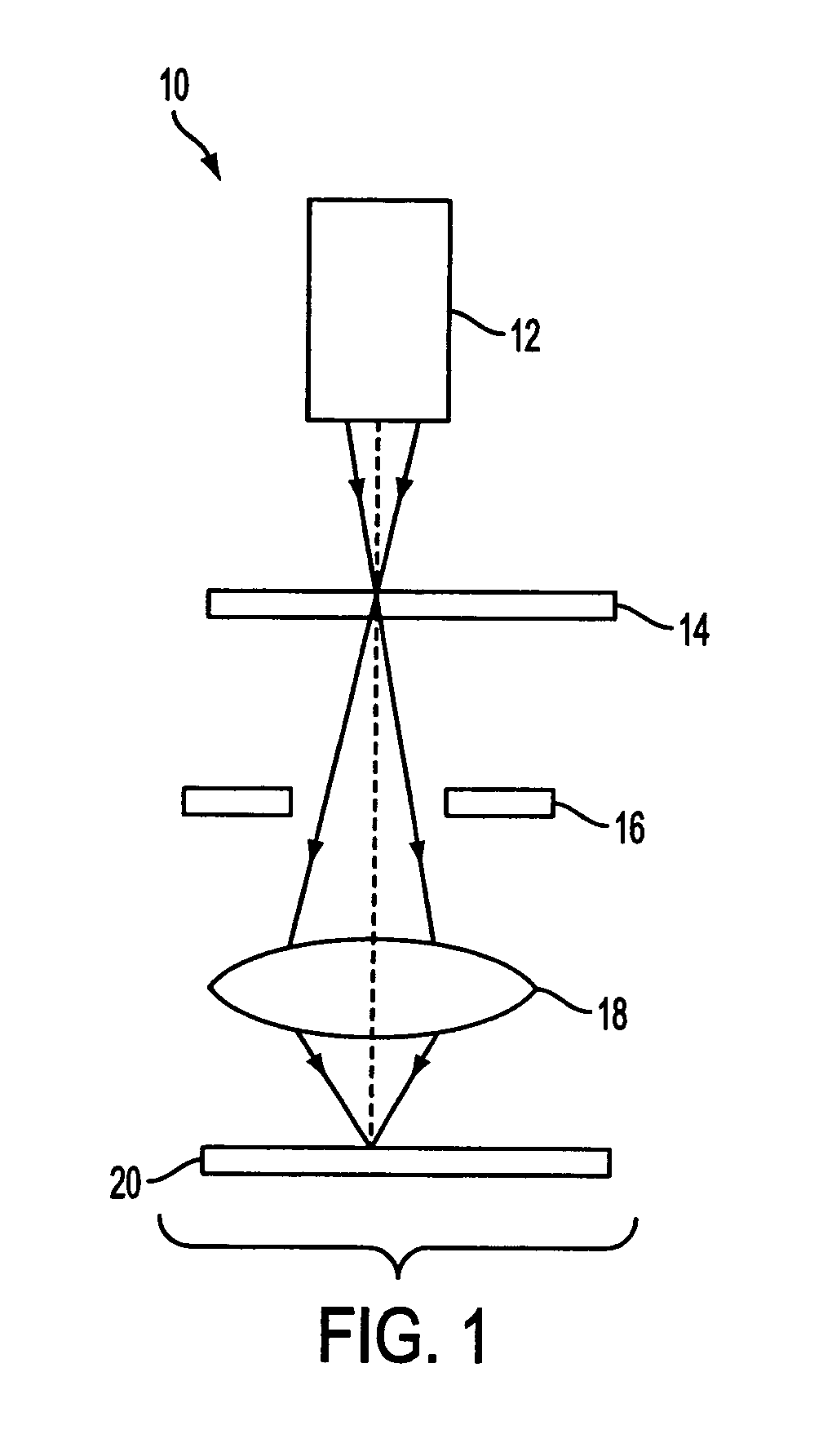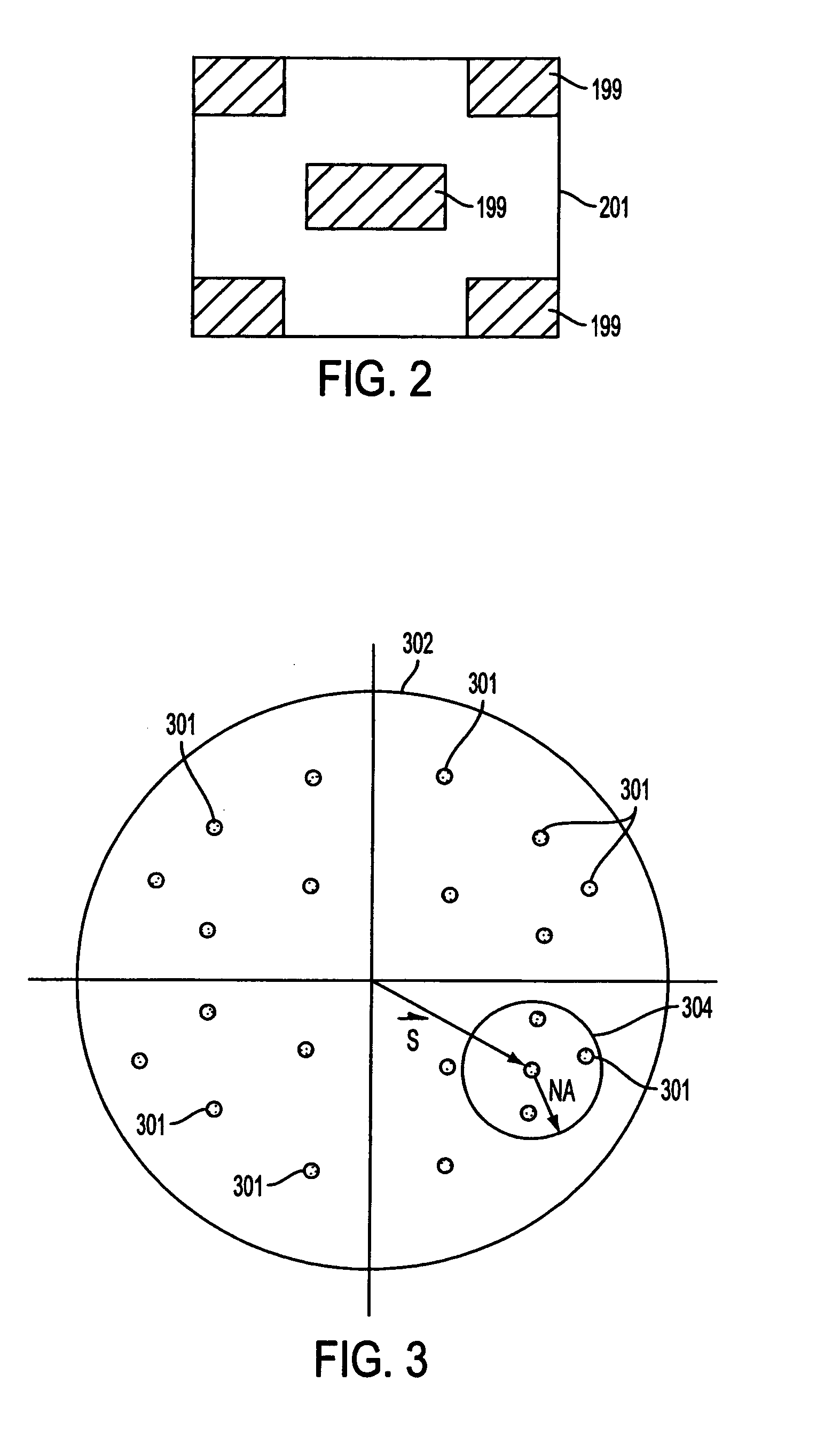Method and apparatus for providing lens aberration compensation by illumination source optimization
a technology of illumination source and compensation method, applied in the field of photolithography, can solve the problems of reducing the size of an integrated circuit, reducing cd (critical dimension) of the corresponding mask pattern approaching the resolution limit of the optical exposure tool, so as to prolong the useful life of the projection lens, improve imaging performance, and improve pattern fidelity
- Summary
- Abstract
- Description
- Claims
- Application Information
AI Technical Summary
Benefits of technology
Problems solved by technology
Method used
Image
Examples
Embodiment Construction
[0033]As explained in further detail below, the object of the lithographic optimization process of the present invention is to first define and then minimize a cost metric “C” under a varying set of imaging conditions, where the cost metric C is a function of a set of process parameters which returns a numeric value that quantifies the performance of the imaging system. Importantly, the cost metric C must reflect the effects of lens aberration on imaging perform. In accordance with the present invention, the cost metric quantifies the effect of the shape of the illumination source on the resulting image printed on the substrate. The smaller the cost metric, the better the imaging process will perform (i.e., the more accurately the resulting image matches the target pattern).
[0034]As a practical matter, lithographic process optimization involves satisfying multiple constraints. Examples of such constraints include, but are not limited to, maximizing the image log slope, maximizing th...
PUM
| Property | Measurement | Unit |
|---|---|---|
| wavelength | aaaaa | aaaaa |
| wavelength | aaaaa | aaaaa |
| wavelength | aaaaa | aaaaa |
Abstract
Description
Claims
Application Information
 Login to View More
Login to View More - R&D
- Intellectual Property
- Life Sciences
- Materials
- Tech Scout
- Unparalleled Data Quality
- Higher Quality Content
- 60% Fewer Hallucinations
Browse by: Latest US Patents, China's latest patents, Technical Efficacy Thesaurus, Application Domain, Technology Topic, Popular Technical Reports.
© 2025 PatSnap. All rights reserved.Legal|Privacy policy|Modern Slavery Act Transparency Statement|Sitemap|About US| Contact US: help@patsnap.com



